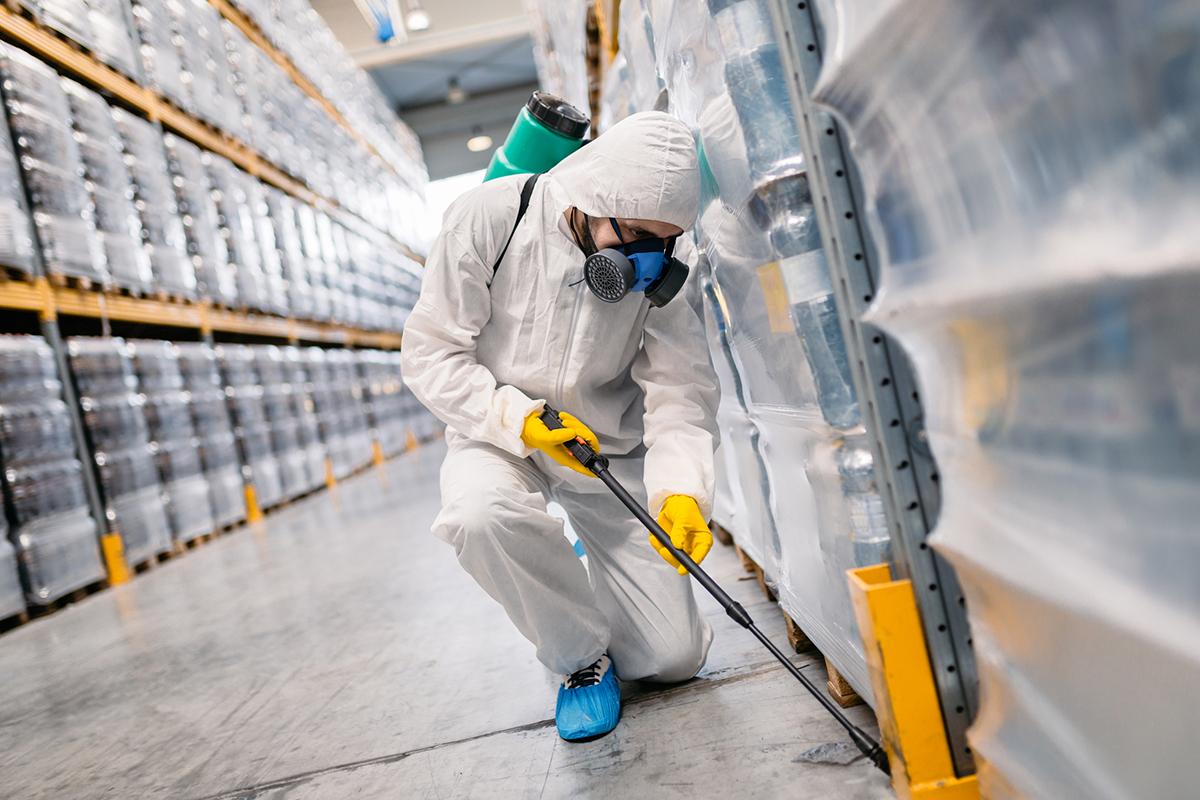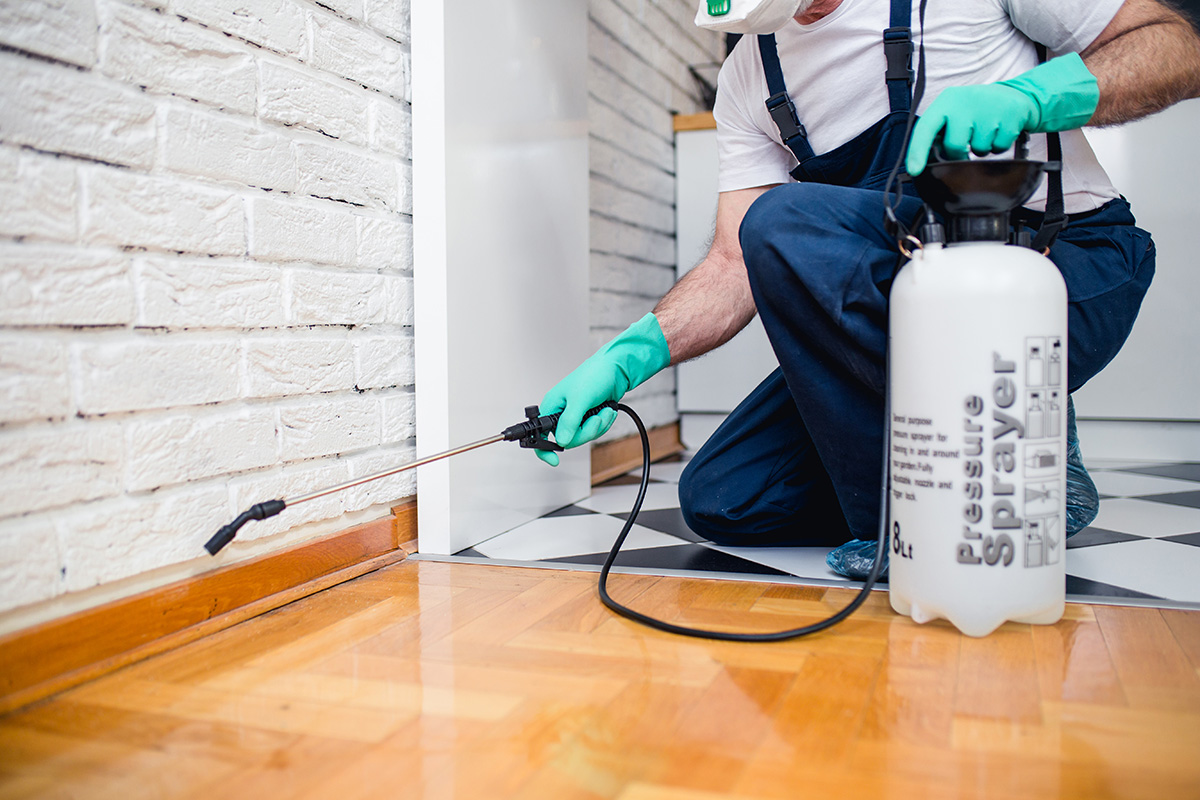Professional A1 Charlotte Bed Bug Exterminator - Quality Solution Assured
Professional A1 Charlotte Bed Bug Exterminator - Quality Solution Assured
Blog Article
Bed Insect Therapy Break Down: Contrasting Chemical Vs. Non-Chemical Solutions
In the realm of bug control, particularly when taking care of the persistent problem of bed pests, the choice in between chemical and non-chemical therapy services can be an essential one. Both approaches provide distinctive advantages and disadvantages, affecting factors such as efficiency, safety and security considerations, and general price. By examining the nuanced details of each technique, a clearer understanding of which course to pursue in dealing with a bed insect problem can be attained.
Efficiency of Chemical Therapies
Chemical treatments for bed bug infestations have actually been extensively identified for their quick and powerful efficacy in eradicating these pests. When considering the performance of chemical therapies, it is vital to recognize that they can supply a quick and comprehensive solution to a bed pest issue.
Furthermore, chemical treatments have the benefit of using residual effects, suggesting that they can remain to get rid of bed bugs also after the preliminary application. This residual activity is especially useful in combating any possible re-infestations. Furthermore, the rapid action of chemical therapies can bring relief to people encountering serious bed bug problems, allowing them to gain back control of their home quickly.
Safety And Security Issues With Chemical Solutions
One important element that needs cautious factor to consider when utilizing chemical solutions for bed bug treatment is ensuring the safety of residents and the environment. Exposure to certain chemicals used in bed bug treatments can lead to respiratory issues, skin irritability, or various other damaging responses, specifically in people with pre-existing conditions or sensitivities.
Additionally, the ecological impact of chemical remedies is one more substantial consideration. Some pesticides utilized in bed insect treatments may be hazardous to useful insects, wildlife, and ecosystems if they leach into the dirt or water supply. It is vital to utilize chemical treatments judiciously, adhering to safety and security guidelines, and considering much less hazardous options to mitigate these threats and make sure the reliable and risk-free management of bed pest invasions.
Benefits of Non-Chemical Strategies
Considering the potential safety problems and environmental effect associated with chemical services for bed pest therapy, exploring non-chemical methods offers a promising alternative with numerous distinctive benefits. Non-chemical treatments are environmentally friendly, as they do not add to air or water air pollution, making them a lasting choice for insect control.
Furthermore, non-chemical remedies can be effective in targeting bed pests, including hard-to-reach locations where chemical treatments might not pass through - A1 pest control charlotte nc bed bugs. Methods such as heat therapy, vacuuming, heavy steam cleaning, and mattress coverings offer extensive removal without the use of harmful chemicals.
Limitations of Non-Chemical Treatments

Furthermore, non-chemical therapies usually call for numerous applications to attain effective eradication. This can be time-consuming and may not always guarantee complete elimination of all bed pests and their eggs, particularly in hard-to-reach or concealed locations.
Additionally, the success of non-chemical therapies greatly relies upon proper application and thoroughness, which can be testing for people without specialist experience. Inadequate application of non-chemical methods may lead to insufficient obliteration, bring about persistent infestations and the requirement for extra treatments.
As a result, while non-chemical therapies have their benefits, it is necessary to recognize these limitations and consider them when determining the most efficient technique for handling bed insect invasions.
Expense Contrast: Chemical Vs. Non-Chemical Options
Given the limitations related to non-chemical therapies, a crucial aspect to assess in the context of bed bug management is the price contrast between chemical and non-chemical alternatives. Chemical therapies normally include the application of pesticides by specialists, which can vary from $250 to $900 per space, depending on the severity of the problem and the size of the location to be treated. In contrast, non-chemical treatments like warmth therapy or heavy steam can be much more expensive, with prices varying from $1,000 to $6,000 for an entire home. While the initial price of chemical therapies website here may appear lower, multiple treatments may be needed to fully get rid of the infestation, potentially increasing the total expense. On the various other hand, non-chemical options might provide an extra environment-friendly and lasting remedy, although they can be cost-prohibitive for some individuals. Inevitably, when thinking about the cost of bed pest treatment choices, it is necessary to consider the upfront expenditures against the performance and long-lasting sustainability of mole pest control the picked approach.
Verdict

Considering the possible safety and security problems and environmental influence associated with chemical services for bed pest treatment, checking out non-chemical strategies provides an encouraging choice with several unique benefits.Provided the restrictions linked with non-chemical treatments, a necessary aspect to examine in the context of bed insect administration is the price contrast in between chemical and non-chemical options. In contrast, non-chemical therapies like warm treatment or heavy steam can be a lot more costly, with prices ranging from $1,000 subterranean termite control to $6,000 for an entire home. While the preliminary cost of chemical treatments might appear lower, numerous treatments might be needed to completely eradicate the infestation, potentially increasing the general price.In conclusion, when comparing chemical and non-chemical bed insect therapy choices, it is necessary to take into consideration performance, security, benefits, restrictions, and expense.
Report this page